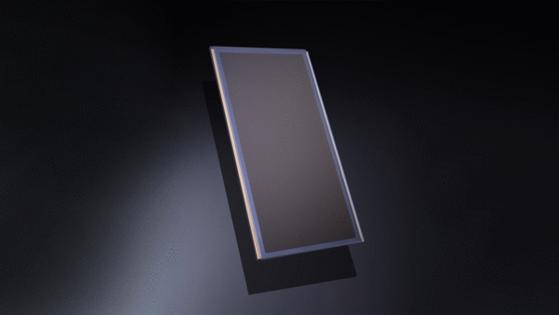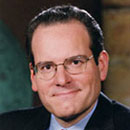High-powered solar cells are poised to replace batteries
Published in Business News
The basic technology behind Ambient Photonics’s solar cells is so simple that it’s routinely assembled as a high school science experiment. In labs across the U.S., students sandwich blackberries’ potent pigment between glass to create dye-sensitized cells capable of harnessing energy from the sun.
Ambient Photonics’s process is more high-tech, with an automated assembly line that moves window pane-sized glass sheets through a gleaming factory in Scotts Valley, California. And the cells it makes can harvest enough energy from the sun to replace coin and other types of small batteries.
The company is deploying the technology to power what Chief Executive Officer Bates Marshall calls the “vast universe” of low-power electronics, including remotes, store shelf displays, sensors and a recently launched keyboard from Lenovo Group Ltd.
In a world that produced a record 62 million tons of e-waste in 2022 — the last year with data available — and an ever-expanding array of electronic items and sensors spreading out across the globe, finding a way to reduce the use of carbon- and resource-intensive batteries produced has never been greater.
Ambient Photonics has raised $61 million in Series A funding as well as $17.5 million in debt financing. That helped get its first factory up and running in Scotts Valley, California, just over the mountains from Silicon Valley, in what was formerly a facility that made mountain bike and motorsports parts.
Now, it spits out dye-sensitized solar cells. While they do the same thing as rooftop silicon photovoltaics — convert photons into energy — these cells rely on a different process and materials. They use dye treated with a unique mix of molecules placed between two thin sheets of glass to capture the photons.
The process is akin to photosynthesis, with the dye acting like chlorophyll. When photons hit it, electrons are released and passed through to a glass plate coated with a conductive material. Those and other materials “are invented at our lab” to maximize energy-harvesting efficiency, Marshall said, allowing the cells to work in lower light than standard outdoor panels.
While in the 1980s small electronics like calculators relied on solar cells, they were extremely inefficient. Ambient Photonics’s version harvests three times as much energy. That allows for a wider array of applications, including items as large as keyboards like Lenovo’s. The Chinese laptop and electronics manufacturer declined to provide specific details about the keyboard or its relationship with Ambient Photonics.
Marshall said Ambient Photonics’s goal is to match the price of existing battery technology. “You have to be compatible with the economic realities,” he said, though he declined to go into specifics.
One area where the dye-sensitized cells can outperform batteries is their environmental footprint. Marshall said the company commissioned an outside life cycle assessment, which found that the cells emit 90% less carbon dioxide per unit of energy they generate compared to batteries.
But while dye-sensitized cells produce lower emissions than batteries per unit of power generated, they can sometimes also require additional hardware. Those extra components can “have a high environmental footprint during manufacturing, in terms of carbon and also critical raw materials/minerals consumption,” Mahmoud Wagih, a green electronics researcher at the University of Glasgow, wrote in an email.
These cells could reduce emissions in other ways, though, such as by eliminating the need for replacing spent batteries. Cutting back on that maintenance — including shipping batteries and dispatching people to install them — would lower the “unnoticed footprint” of devices, Wagih said. “The true carbon cost of battery-powered electronics lies in the logistics of replacing a battery in some settings.”
Because it lasts much longer than traditional batteries, the technology could also open up a new market for sensors and devices that connect to the internet and improve processes like factory operations. “Especially in commercial and industrial applications, the battery really is holding back the market growth because the cost of replacing all those batteries is so high,” Marshall said.
For items like phones and laptops, the cells don’t produce enough power to make sense as a battery replacement. But at the factory, Marshall showed off prototypes of mice, remotes and small digital displays for grocery store items that he called “champion archetypes” designed to spark would-be buyers' imaginations about how dye-sensitive cells can be used.
Ambient Photonics produces the cells in the U.S., but in many cases, they’ll end up in electronic goods manufactured in Asia, particularly China.
That could pose a problem following a trade war sparked by President Donald Trump. After he levied 145% tariffs on China, the country responded with 125% tariffs on American goods and warned countries off making deals with the U.S. Trump has carved out an exemption for consumer electronics, though his administration says it’s only temporary. The clock is also ticking on the 90-day reprieve Trump granted other nations, including major electronics manufacturers like Japan and South Korea.
“It's hard to plan when things are changing so rapidly,” Marshall said. Instead of trying to anticipate how the political winds will shift, the company decided to build its factory in California where its engineers and experts could streamline automation to keep production costs down, he said.
Beyond reducing the risk of political uncertainty, he said, focusing all the company’s attention on its first plant will help it ensure future factories can be built anywhere and essentially be plug-and-play. Marshall said Ambient Photonics wants to build a second one, ideally next door given the local expertise, and it has applied for a Department of Energy loan to build a “super fab,” a high-tech facility much larger than its current operation. The office that issues those loans, though, went dormant under Trump’s first term, and it remains unclear whether it will issue new loans during his second after being very active under former President Joe Biden.
For now, Ambient Photonics says it still has plenty of runway for growth from its current factory. It’s putting the final automation touches in place and production will ramp up to hundreds of thousands of cells a month this year with a target of millions by 2026. The company is also looking to raise a Series B funding round.
Marshall said the startup has sent its initial shipment to Lenovo as part of what he called “mass production-level” volume and “to three or four other major customers” that he declined to name. “This is really our kind of coming out year.”
©2025 Bloomberg L.P. Visit bloomberg.com. Distributed by Tribune Content Agency, LLC.












Comments